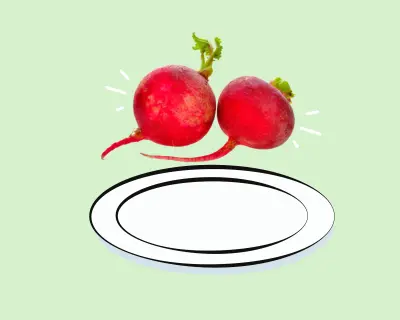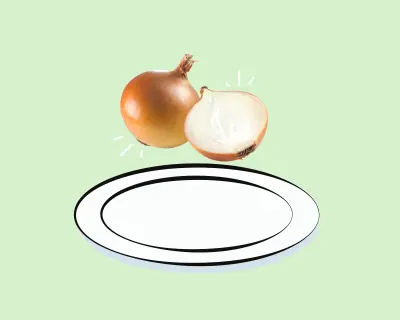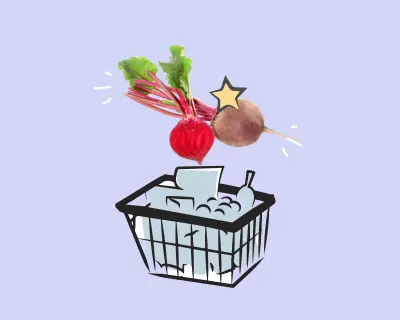Can Brazil Nuts Be Deadly?
Pepper Potts 0:15
Is this food truly deadly? Can you please tell me what the deal is with Brazil nuts? Wow.
Dr. Sarah 0:25
That’s a fascinating question. Because Brazil nuts hypothetically, not even hypothetically, you could overdo Brazil nuts. So the nutrients that Brazil nuts have that makes them so incredibly valuable, that gives them such a high nutritional score, sort of a measurement of total nutrients per calorie is selenium. So a single brazil nut has about 90 micrograms of selenium. The recommended dietary intake for selenium is 55 micrograms for an adult, male or female. So one Brazil that is 175 ish percent of the daily value of selenium. So selenium is a really, really important mineral to get enough of from our diets. But like a lot of nutrients, not that we have some nutrients that we have such an easy time getting rid of excess, we really don’t have to worry about overdoing it. So that’s the case for a lot of B vitamins, for example, like you could just have, you could have a ton of it, and your kidneys will just go this is too much riboflavin. And we just get rid of the excess. For most minerals, and also the fat soluble vitamins, we have a hard time processing when we consume too much. And so we end up really wanting our diet to supply an amount and a happy medium. So we want to be hitting the daily value but hitting our dietary reference intake level, the key, how much do we actually need for all of the different biological processes in the body that use that nutrient. But we want to stay well clear of what’s called the tolerable upper limit. So this is a like maximum amount that is set based on chronic toxicity levels. So chronic toxicity is what happens when we have two type two types of toxicity, there’s acute toxicity. So big a dose of something that is so much that it’s toxic, and all bad symptoms happen. And then chronic toxicity is the dose that you’re exposed to everyday that over weeks to months, would develop into symptoms of toxicity. So with Selenium, the chronic toxicity level is 900 micrograms of selenium per day. So the tolerable upper limit is set below that to give some buffer. So the tolerable upper limit is set to 400 micrograms, I’m fairly certain. So one brazil nut, supplying 90 micrograms per day. If you have four and a half Brazil nuts in a day, you’re actually at the tolerable upper limit for selenium. And if you have 10 Brazil nuts in a day, you’re at the chronic toxicity level for selenium. And now every nutrient like what toxicity looks like is a little bit different. With selenium, you have symptoms like hair falling out, fingernails falling out. There’s rashes and gastrointestinal symptoms, fatigue and irritability. And now here is one of the most fascinating side effects because I don’t know any other nutrient where this is a symptom of toxicity. One of the symptoms of selenium toxicity is garlic breath without the garlic just didn’t know about is crazy, right? Like, I don’t I don’t know the biochemistry of how that’s happening. But I think it’s fascinating. And then even like below, like getting too much selenium, but not quite enough to cause toxicity. There is some science showing that that could potentially be causing some problems with insulin signaling and insulin sensitivity, maybe increasing the risk of developing type two diabetes. So we definitely want to be against steering well clear of the tolerable upper limit of selenium. And I think that 10 Brazil nuts, first of all, Brazil nuts are tasty AF. And it is very easy to eat. Yeah, exactly. So. So knowing this is really important. So 10 Once in a while. Half a bag, once in a while, is going to be fine. There is no acute toxicity level set for selenium. That doesn’t mean there isn’t an amount that would be acutely toxic. It just means we don’t really know what it is. But like, if half a bag was causing acute selenium toxicity when being able to buy half a bag right? Like, right?
Dr. Sarah 5:09
So if you Eat Brazil nuts every single day limiting to three or four so we’re selenium intake is staying below the tolerable upper limit is the prudent course of action. If you’re having it once in a while and you want 10 In one go or 20 whatever, for most unless you have some like weird other sources of dietary selenium like or you’re taking selenium supplements, like unless there’s some other source that’s bringing your levels i You don’t need to worry about it. But definitely yeah, Brazil nuts are for sure. One of the very few foods like we don’t really see chronic toxicity from foods very often. There’s really only, like, if I think about it, I can think of three foods that we actually need to be aware of the capacity to hit chronic toxicity levels of certain nutrients from them. Brazil nuts is one of them. Liver is another so liver has a whack load of vitamin A and quite a lot of copper. enough that if you were eating one to two servings a day, so four to eight ounces measured raw, so three to six ounces measured cooked every single day you could hit those chronic toxicity levels for vitamin A and copper. So definitely like staying below, liver daily is recommended. And then the other one is there’s certain types of seaweed kelp that I think are the most common that have so much iodine that you can hit iodine toxicity with having kelp every day. So the other more common varieties of seaweed that we get like nori sheets like what’s sushi, definitely like a level of iodine that is going to be fine if you’re having a serving or two per day. But kelp like kombucha which is used to make dashi we want to be making sure, like Dashi, it’s very diluted, you don’t need to worry about like, it’s, you’re using one or two sheets for an entire batch of broth. So you don’t necessarily have to worry about how much iodine there is, unless you’re drinking the entire pot, which I guess some people might do, right, like, some people might just make a pot of Dashi and drink the whole pot. So then that is somewhere. Some other place to be aware of, this is another food, that is such a great source of this important nutrient that we can actually overdo it. Most of the time, we only see toxic levels of nutrients in the context of supplementation. So I heard that vitamin A is really good for my immune system or my eyesight. So I’m taking this dose, this supplement of vitamin A. I didn’t check with my doctor, right? This is really common, when we’re taking supplements to just go, Oh, I see this influencer recommending the supplement, I’m gonna go get it or I read about the supplement in this magazine article. So I’m gonna go get it right, we just kind of think of supplements as a DIY thing to do. But there’s so many interactions between supplements and medications. And depending on the context of your diet, you could hit too much. So it is really important to be like telling your doctor or working with a registered dietician, like telling a health care provider. Yeah, this is how I eat and these are my supplements because if I took this vitamin A supplement that I write about online, and then I’m also taking a multivitamin that has a lot of vitamin A in it. That’s the type of situation where we see vitamin A toxicity. It’s called hypervitaminosis. A. So with Selenium, Brazil nuts are really the only food that’s going to be that high. Our other best sources of selenium are seafood, but there’s no seafood that’s like that amount of selenium.
Pepper Pots 9:06
So does someone need to worry if they’re having three or four Brazil nuts and they’re eating seafood every day? Is that a concern? We hear so much about all this like food fear online, and like these are really health promoting foods, but you can also overdo stuff. So it’s hard to like, not see something as like, oh, well then I should just avoid it altogether. Right? And that’s what we want to avoid doing. But like if someone has heard about how great selenium is, and they’re taking their, you know, 123 Brazil nuts a day, and they also hear about how good fishes and they’re eating their, you know, one serving of fish a day. Can that potentially cause a problem? Or is that not really a concern?
Dr. Sarah 9:47
Um, let me actually like, look up how much selenium is in a couple of different types of fish, so we can actually do the math. Cool. Okay, so I looked up the Selenium content. Have sardines, coho salmon, and a skipjack tuna, which is the most common type of tuna used in like light tuna, which, like canned tuna, so the sardines have about 60 micrograms of selenium. So a little bit over 100% Daily Value. So that would basically mean that you would want to limit your Brazil nuts to two or three instead of three or four. And then both the salmon and the tuna was closer to 40 micrograms, so like three quarters of the Selenium for the day. Again, though, I think that would mean if you’re eating fish every day, if that’s the kind of range where fish is, and we’re, we’re like, well above meeting our selenium needs, and we’re just trying to like, give ourselves some space from the tolerable upper limit. I think that if we’re eating fish every day, the prudent course of action would be to limit Brazil nuts, maybe even to one or two, just because we don’t want to be always like riding the line of of the maximum of the tolerable upper limit with Selenium, especially given that some, like, lower than that level might still be increasing risk of type two diabetes. Gotcha.
Pepper Potts 11:15
Well, that’s good to know. Because maybe someone really doesn’t like seafood. And they can just have their personal notes. And maybe someone just doesn’t like that they’re still not sold on. I don’t know who that person would be. But like, that’s possible. And you can do a mixture of both, but just be cautious. But, again, not letting yourself fall into any kind of fear around that food, because it’s about how much what do you call the dose response? Right, that is what we need to be aware of.
Dr. Sarah 11:42
So I think the other thing here, I think it’s really worth mentioning is we’re kind of walking close to that line about talking about miracle foods, right? So those foods that are like, Oh, just eat whatever, right? Just eat three Brazil nuts a day and your thyroid will be whatever the claims are. Right? Right. The challenge with miracle foods is not just that, sometimes you can overdo nutrients, right? If you are like, Oh yeah, I’m gonna have Brazil nuts every single day. It looks like the math shows how quickly we can get to chronic selenium toxicity and have some pretty nasty health effects from that. So we definitely don’t want to overdo Brazil nuts, even if they are an amazing source of a really important nutrient. But the other challenge is, whenever you have that, like a miracle food mentality, then you’re focusing on one food or a small handful of foods that can displace other nutritionally important foods, like other nuts and seeds that have lots of really valuable nutrition. Sunflower seeds, and pumpkin seeds are really high in vitamin E, pumpkin seeds are really high in magnesium, you’ve got some really beneficial phytonutrients in almonds, almonds have a bunch of studies showing benefits, right? You’ve got all those mono unsaturated fats and cashews. Like there’s other great things you got alpha linolenic acid and walnuts. Like there’s other nuts that are really beneficial. So we’re always picking Brazil nuts. Not only do we risk overdoing selenium, but we’re also missing out on the benefits of a diversity of nuts and seeds. So the other piece of this is, yeah, definitely overdo Brazil nuts. It’s not just about too much selenium. It’s also about missing out on what a diversity of similar foods could offer us. Right.
Pepper Potts 13:35
Hurray for Max nuts. Definitely. Well, wow, that was a lot. I just learned so much about Selenium. That was great. Thank you so much for that. But if we have someone who’s listening who wants to dive in even more to selenium, is there a place they can go read in depth about that nutrient? So
Dr. Sarah 13:57
especially if you want to kind of get into understanding selenium toxicity, and what selenium is and like different types of seafood, like if you are worried about writing that line, I would recommend going to my website, neutral or.com. So every nutrient has a really detailed article that lists all of the biological rules of that nutrient. And then all of the different health conditions not getting enough of that nutrient are associated with so you can understand the link between low selenium and thyroid disease, for example, in this case, and then there’s a section on how much we need, what the daily values are for different demographics. And then what happens if we get too much. And then best food sources and good food sources are listed as well. So that’s where you really are interested in understanding in depth, how a nutrient is impacting your health, and including that like happy medium range, I would say head to the website, that’s going to be the best resource.








